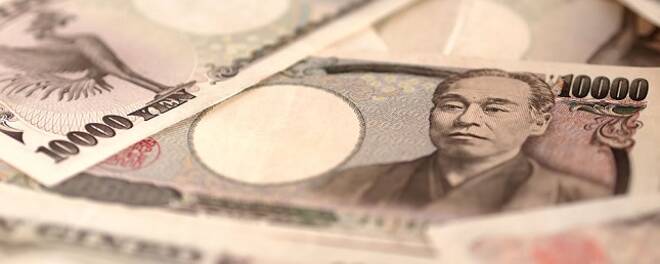Advertisement
Advertisement
USD/JPY Fundamental Daily Forecast – 2020 Direction To Be Determined by Fed Decisions
By:
No one knows how long the “trade deal euphoria” is going to impact the financial markets. Certainty investors will be watching business spending and business investment for a pick-up in activity. The Fed may tell us in March when it may or may not cut rates.
The Dollar/Yen settled at the end of 2018 at 109.603 and at the end of 2019 at 108.660. So despite record highs in the stock market and tremendous demand for risky assets, the greenback ultimately weakened against the Japanese Yen. Traders said the Federal Reserve’s shift from raising rates to cutting them made the U.S. Dollar a less-attractive asset. This move was primarily responsible for keeping a lid on the Forex pair.
In 2019, the USD/JPY settled at 108.660, down 0.943 or -0.86%.
The year began with the USD/JPY rising to 112.405 by the week-ending April 26. During the first quarter of the year, the Fed was still in tightening mode although beginning to listen to the market, which was telling them they were tightening too fast.
The Fed initially accommodated the market while watching the economy data for signs of weakness by stopping their rate cuts.
However, as trade talks between the United States and China broke down in May and both economic powerhouses retaliated throughout the summer, the Dollar/Yen plunged.
U.S. Treasury yields also plunged, inverting in August, while signaling a possible future recession. The Fed also cut its benchmark rate on July 31, the first of three. The USD/JPY dropped sharply from 112.405 in late April to 104.463 the week-ending August 30.
After putting in the low for the year at 104.463, the USD/JPY proceeded to rally until the week-ending December 6, when the rally stalled at 109.728.
Clearly the direction of U.S. interest rates and the nimbleness of the U.S. Federal Reserve controlled the price behavior in the USD/JPY. However, they were just responding to economic data and the impact of the trade war on the economy.
While the Fed was pretty active, the Bank of Japan did little in 2019. BOJ policymakers left interest rates unchanged at -0.10% throughout the year and made only subtle tweaks to policy decisions. However, BOJ Governor Haruhiko Kuroda did leave the door open to more aggressive moves if necessary.
Critics want the BOJ to bring an end to the negative rate environment. They cite weak bank profits as one of the reasons, however, don’t expect this to happen until there is a strong uptick in consumer inflation. Additionally, don’t be surprised by the implementation of fiscal stimulus from the government.
No one knows how long the “trade deal euphoria” is going to impact the financial markets. Certainty investors will be watching business spending and business investment for a pick-up in activity. The Fed may tell us in March when it may or may not cut rates.
In 2020, the Fed is likely to continue to be the strongest influence on the direction of the USD/JPY, but at some time during the year, the U.S. Presidential Election will move to the forefront.
The USD/JPY is likely to continue to be underpinned if Trump remains the frontrunner. If the Democratic candidate starts to strengthen then look for the Dollar/Yen to weaken as most investors view the Democrats as anti-business.
About the Author
James Hyerczykauthor
James Hyerczyk is a U.S. based seasoned technical analyst and educator with over 40 years of experience in market analysis and trading, specializing in chart patterns and price movement. He is the author of two books on technical analysis and has a background in both futures and stock markets.
Advertisement
